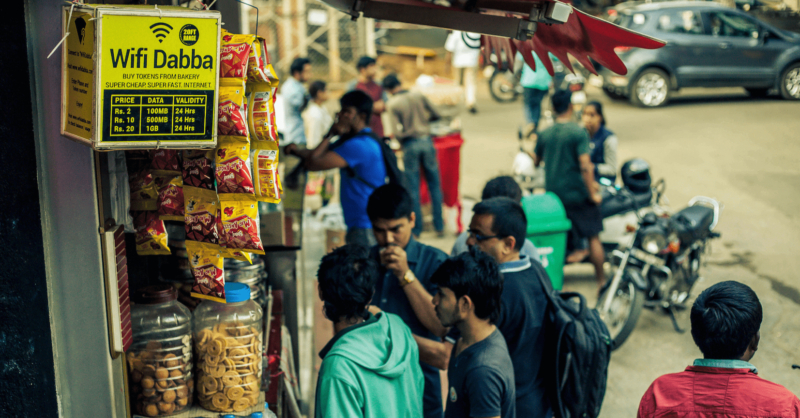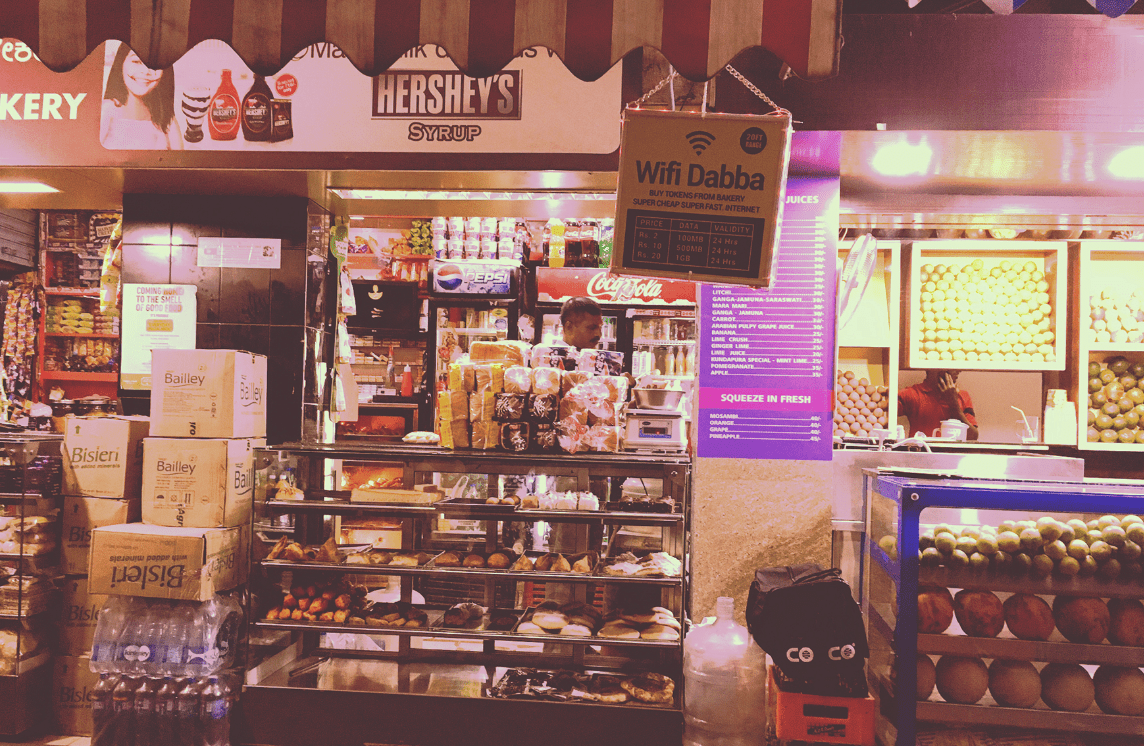Even as India has the cheapest mobile data rates in the world at $0.09 per GB, the penetration of hi-speed fixed line broadband across the country is as low as 1.3%. Solving this problem is an innovative startup called Wifi Dabba which is installing local mesh networks to provide high speed unlimited broadband in India’s cities for as low as $0.01 per GB per day to stream videos, watch cricket or run complex codes. It also offers hi-speed unlimited broadband at just $10 per month.
The startup uses line of sight networks by installing hi-speed routers on rooftops in Bengaluru and can be accessed via tokens available at local grocery stores and tea shops.
The co-founders of WiFi Dabba, Shubhendu Sharma and Karam Lakshman who started the company in 2017, talk to Startupanz.com in an email interview on their plans for their company.
Q1. What led you to start this company? What is the problem being solved here since India already has one of the cheapest data rates in the world?
This happened by chance. Karam & I have been working together & this is our third startup. We have always been software guys but for the first time in 2016 we were excited to play with hardware.
We started with RasberryPi as a side project and started building fun projects. One of the use cases that we came across was public wifi routers.
This was the time when 4G was non-existent & people paid very high charges to access the internet on the move. We built and deployed our custom router to mom-n-pop stores near our office in IndiraNagar, Bangalore and we straight away saw usage happening on these hotspots.
Since this was a bootstrapped adventure, we charged our users from day 0. What worked for us for sachet size pricing and high speed internet access.
There is a massive underserved market for reliable, cheap & fast internet access in India. 4G/5G alone cannot fill this demand. What we are solving is a cheap, reliable, fast & unlimited internet access for the underserved Indian consumers.
No, we haven’t pivoted on the idea. We continue to build a Wifi mesh across cities. The goal is to lower the cost of deploying a broadband internet by a factor of 10 and pass this cost savings to the consumer with an affordable internet connection.

Q2. How do you plan to complete with the heavily subsidized plans and massive scale of telecom operators such as JIO?
We are already cheaper to the competition by a magnitude of 8-10x. We offer 1Gbps speed with no data caps at $10 a month.
We are working on free space optics. This tech is what companies like starlink are working on to connect their satellites. What we are working on is the future. The traditional telcos are soon going to run into challenges of UG / OG fiber.
Q3. Can you provide us the details of your WiFi plans and what is the revenue model for partners who wish to install the router at their place on your behalf?
Our WD router comes with custom OS that helps the location owner monetize by selling bandwidth.
They don’t have to do any additional tasks in order to earn a 30% revenue share from the business generated from their location device.
Q4. How do you plan to solve the problem of line of sight? Do you see this tech adopted across cities or do you always need a closely meshed network for its success in a local area?
We have been lucky so far to solve the challenges that have come our way. Using drone & GIS mapping, we have mapped the entire city of Bangalore and have sorted out the elevations, positioning & height requirement for our device placement.
So LoS is sorted. We have been running our services in one neighbourhood of the city.
Now that we have been profitable for the last one year and the tech has been tested for 18 months, we are ready to scale this across the city. What we have learnt from our users is that a wifi network is useful if it exists across the city.
Not just from a cost perspective but from quality of service as well. The 4G networks are choked and can’t handle the growing data demand since they have inherent spectrum limitations. To solve this at scale we are now offering our partner program for the Bangalore city.
After a hustle of 3 years we are ready to scale across Bangalore with the laser tech that we have been working with.

Step 1 done: We have built a low cost network stack and have lowered the cost of deploying a citywide broadband network from $50m to $5m.
We use lasers and commodity components thereby avoiding the core expense at the heart of current ISPs – expensive underground fibre and its associated manpower, heavy capex and regulatory pains.
Ready for scale: We’ve run a beta network with thousands of live customers over the last 12 months and we know the tech works. We’re now ready to scale across our hometown of Bengaluru with its population of 11m people and less than 10% broadband penetration.
A killer proposition: We have a killer offering for the customer – 1gbps speed with no data caps at $10/month and a free Wifi Dabba router. This is 10x better and cheaper than anything else on the market. This playbook has been executed successfully in the mobile 4G market in India by Jio, we’re applying the same playbook in broadband.
Go where no ISP has gone before: We’re taking an AWS-like platform approach to our tech stack, our mission is to deliver companies and partners deep APIs, network integration points, edge-caching and much more. We believe this approach will result in a whole new class of applications and services for users. We want to be the ISP that developers will love.
The opportunity:
As we roll out Bangalore city, we have divided Bangalore into 100 zones (We call each a PoP – Point of Presence). Each has a potential deployment base of 18000 router units. One has an opportunity to invest in one or more WD PoP and be a silent partner.
Wifi Dabba does all the work including customer acquisition, provisioning, managing, billing and ops. Investment partner gets a monthly return on your investment over the next 6 years. We have sold 68 of 100 slots so far.
Q5.What have been your top 3 learnings over the past few years from your entrepreneurial journey?
One needs to take a 10 year view to make something people want. Not everyone gets lucky in a 2 year period.
Secondly, cash flow is the king. If you can manage that, you will eventually succeed.
Thirdly, sales is an underrated skill. Our schooling/education system should have this in syllabus from class 1.
Q6. How important is a co-founder in a startup journey? How do you both resolve your differences over vision and decisions?
It is quite important. When one is committing to a journey, ups & downs are bound to happen.
If you have a co-founder you can sail through those downs much easier. This becomes more important if you are building something for the next 20-30 years. This is a long time and you need people around you who understand and relate to what you are trying to solve or build.
There is always a middle ground that is best for the betterment of the company.
All you need is to trade-off and find the right balance between your ego & what’s in interest of your company. If co-founders can find that middle ground, I think it becomes easy to move forward & scale.












